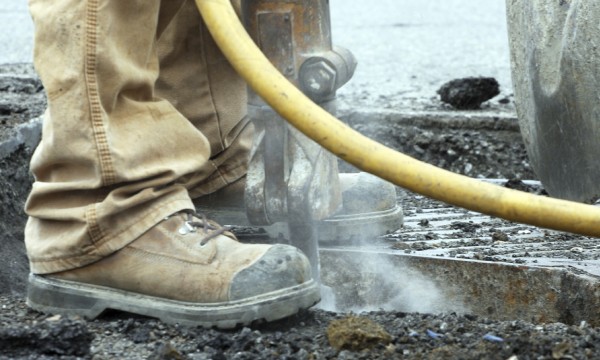When you're on the job site, you need to protect your feet. There are lots of different types of dangers out there, and falling objects are just one of them.
- Browse Categories
- All Tips
-
Home & Garden
- All
- Appliances
- Bathroom
- Cleaning
- Crafts
- Decorating
- Electrical
- Flooring
- Furniture
- Garage Door
- Gardening
- Green Living
- Heating
- Home Alarm Systems
- Home Maintenance
- Home Remedies
- Home Security
- Home Staging
- House Sitting
- Junk Removal
- Kitchen
- Lawn Care
- Lock Systems
- Moving
- Outdoor Living
- Pest Control
- Plumbing
- Renovation
- Roofing
- Snow Removal
- Storage
- Tools
- Tree Service
- Health
- Family
- Travel
- Auto
- More Tips

Everything you need to know about safety boots
November 25, 2014

Protective toes
Protective toes come in a variety of styles, the most common of which is a steel toe insert under the fabric.There is also often a padded covering for extra protection.
- Basic protective toes can protect against falling objects, from lightweight caps that safeguard against approximately 15 pounds of weight falling from three feet, to heavy duty protection that covers for up to 30 pounds of weight dropped from three feet.
Puncture protection
Falling objects aren't the only type of impact that can endanger your feet. For certain industrial settings, puncture protection is necessary to stop sharp objects from piercing the boot.
- Metal insteps and protective heels are common in this type of boot. The sole of the boot is often reinforced to protect from objects puncturing upward from the ground.
Electrical protection
On job sites where a live current is present or high voltage machines are common, boots must be fit with soles that diffuse electrical current, protecting against shocks.
Steel insoles
Some jobs require the joints in the feet to be stabilized against long term, repeated stress and strain.
- For instance, heavy truck drivers need their ankles stabilized for long days of pumping the gas. In these cases, additional support is required to keep joints healthy.
Environmental protection
Extreme conditions are common on many work sites, from cold temperatures to dangerous levels of heat and fire. In each case, boots must protect the feet from prolonged exposure so workers can do their job comfortably.
Slip resistance
Jobs where ice and water is presence can require slip-resistant footwear. Firefighters, for example, have special boots to prevent them from slipping and falling in treacherous conditions where they're often carrying people or holding high-pressure hoses.
Chainsaw boots
Cut protection is key in many jobs, especially where workers are operating saws and other mechanical cutting equipment. In these cases, frontal protection of the feet is absolutely critical, as any minor mishap could lead to serious injury.
The Canadian Standards Association classifies protective footwear in seven different categories, each specified for a different work environment and tested for a different level of danger.
Always ensure that your safety footwear is the appropriate classification for your workplace.







